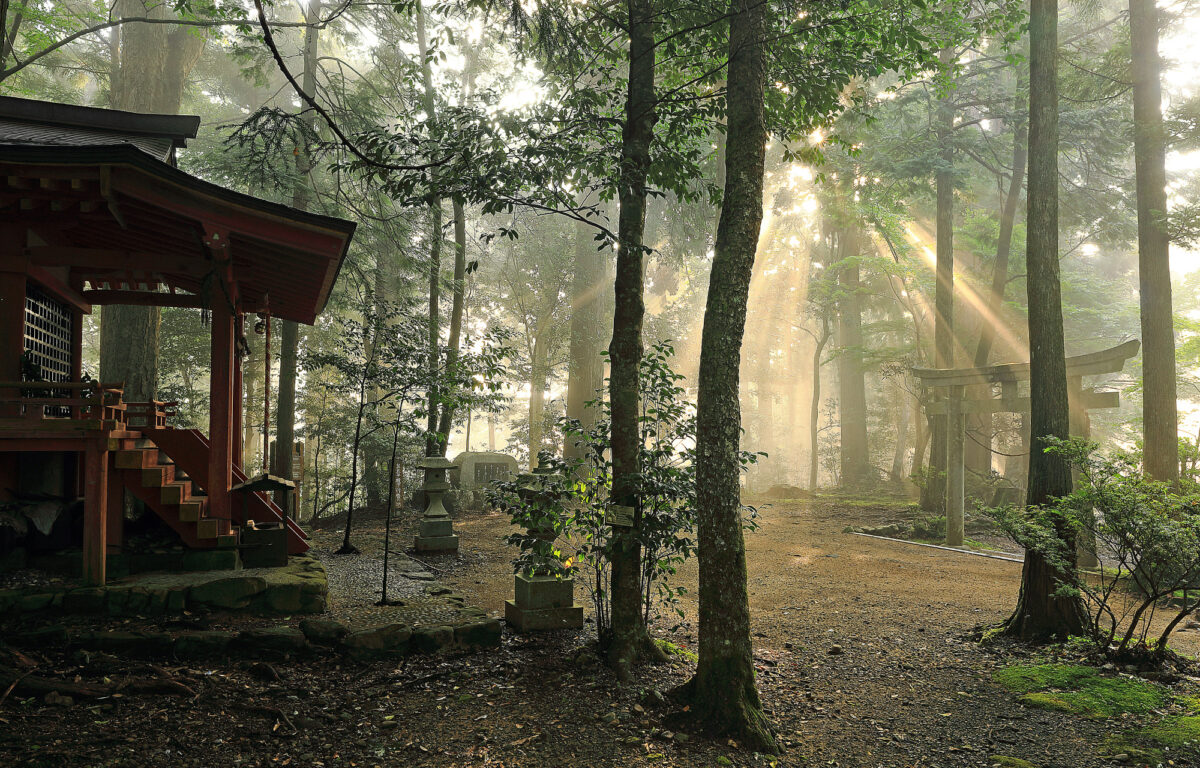https://www.dekitabi.com/s/Nachikatsuura-Town
Imagine this: ancient trails winding through mist-laden forests, sacred shrines whispering secrets of the past, and an atmosphere so thick with history it feels as though you’ve stepped into another realm. Welcome to the Kumano Kodo Pilgrimage Routes, a labyrinth of paths that have beckoned travelers for over a thousand years. This is no ordinary hike; it’s a spiritual odyssey through the mystical Kii Peninsula, where every step is steeped in legend, every turn a page in an ancient storybook.

The Allure of the Kumano Kodo
The Kumano Kodo isn’t just a hike; it’s a living, breathing narrative of devotion and discovery. Designated a UNESCO World Heritage site, these routes were once trodden by emperors, samurai, and monks seeking spiritual solace. Today, they attract modern pilgrims and adventurous souls yearning to connect with Japan’s enigmatic past.
The Pilgrimage Begins
Your journey starts in the heart of the Kii Peninsula, where dense forests and craggy mountains cradle the ancient trails. The air here is different – it hums with an almost supernatural energy. As you step onto the path, you’re not just walking; you’re entering a timeless realm where the lines between the physical and the metaphysical blur.
The Nakahechi Route: The Imperial Way

One of the most popular routes, the Nakahechi, was historically favored by the imperial family. This path weaves through picturesque villages, cedar forests, and mountain passes, leading you to the grand Kumano Hongu Taisha, the first of the Three Grand Shrines of Kumano. Imagine walking in the footsteps of royalty, each step a beat in the rhythm of history.
The Haunting Beauty of the Kii Peninsula
As you tread deeper into the forest, the world you know fades away. The trees here are ancient sentinels, their gnarled branches reaching out like spectral arms. The path is often shrouded in mist, lending an ethereal quality to your surroundings. It’s as if the spirits of the past are guiding you, their whispers rustling through the leaves.
The Oji Shrines: Guardians of the Trail

Scattered along the routes are the Oji shrines, minor shrines that serve as spiritual waypoints. These shrines, often adorned with moss and shrouded in an aura of tranquility, offer places for reflection and prayer. They are the guardians of the trail, watching over pilgrims as they navigate the treacherous paths.
Encounters with the Supernatural
Stories abound of supernatural encounters along the Kumano Kodo. Pilgrims speak of spectral figures glimpsed through the trees, strange lights flickering in the night, and an overwhelming sense of being watched. These tales are not mere flights of fancy; they are woven into the fabric of the pilgrimage, a testament to the trail’s mystical allure.
The Yōkai of Kumano: Spirits and Demons
Local legends tell of yōkai, supernatural creatures that inhabit the forests. From mischievous spirits to malevolent demons, these beings are said to both help and hinder travelers. The yōkai add an element of danger and excitement to the pilgrimage, a reminder that you are traversing sacred, otherworldly ground.
The Climactic Arrival at the Grand Shrines

Your journey crescendos as you approach the Three Grand Shrines of Kumano: Kumano Hongu Taisha, Kumano Nachi Taisha, and Kumano Hayatama Taisha. Each shrine is a marvel of traditional Japanese architecture, imbued with centuries of spiritual significance. The shrines stand as monuments to faith, resilience, and the unbreakable connection between humanity and the divine.
Kumano Hongu Taisha: The Heart of Kumano
Kumano Hongu Taisha, the spiritual center of the pilgrimage, is a place of profound serenity. The shrine’s majestic torii gate, rising from the surrounding forest, is a powerful symbol of the passage from the mundane to the sacred. As you pass through, you leave behind the temporal world, stepping into a realm where the divine is palpably present.
The Aftermath: Reflection and Transformation
Completing the Kumano Kodo is not just a physical achievement; it’s a transformative experience. Pilgrims often speak of a profound sense of renewal, a deeper understanding of themselves and their place in the universe. The journey leaves an indelible mark on the soul, a testament to the power of the path.
Practical Tips for Modern Pilgrims
While the Kumano Kodo is steeped in history, it’s very much accessible to modern travelers. Here are some essential tips to ensure your pilgrimage is both safe and fulfilling:
- Preparation is Key: The routes can be challenging, so physical preparation is crucial. Ensure you have proper hiking gear and supplies.
- Respect the Sacred: The Kumano Kodo is a spiritual journey. Respect the shrines, follow local customs, and tread lightly.
- Timing Your Journey: The best times to walk the Kumano Kodo are spring and autumn when the weather is mild, and the scenery is breathtaking.
- Guides and Maps: While the trails are well-marked, consider hiring a guide or using detailed maps to enhance your experience.
- Stay Connected: While part of the allure is disconnecting from the modern world, ensure you have a means of communication in case of emergencies.
Embracing the Journey
The Kumano Kodo Pilgrimage Routes are more than just trails through the wilderness. They are conduits to a world where history, spirituality, and nature intertwine. Whether you seek enlightenment, adventure, or simply a break from the chaos of modern life, the Kumano Kodo offers a journey like no other.
Final Thoughts
Lace up your hiking boots, step into the mist, and let the ancient spirits of Kumano guide you on a journey that transcends time and space. The Kumano Kodo awaits, its secrets ready to be discovered by those brave enough to seek them.


Leave a Reply